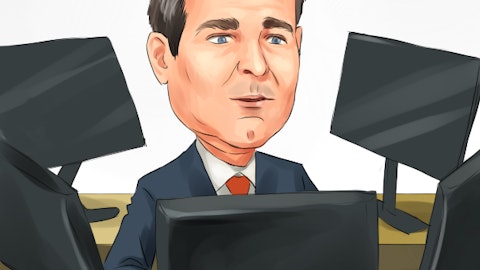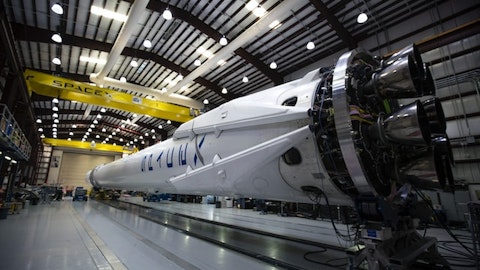Luca Savi: Sure. The Smart Pad is part of the initiative that we have on the innovation. We have several projects going on in the Smart Pad. We have a project on one sensor, where we are working together with some, I would say, unconventional customers in terms of some fleet management and look at that as a business opportunity, different than the OEM side. And then we are working together with a couple of OEMs and Tier 1 on the 3 sensors. And as you know, there are a lot of changing happening from a technology point of view on the breaking with autonomous vehicle, et cetera, and those are progressing well as well, Nathan.
Nathan Jones: Just one final one on the CCT destocking. Clearly, in Industrials, we’ve seen a lot of destocking going on, people built too much inventory in 2022. Some places you’re seeing in market softening, lead times are coming down, supply chains are improving. So there’s multiple inputs on why destocking is happening. Do you have any color on how much of this is being driven by the fact that lead times are getting shorter. People may be built too much inventory last year versus actual softening of underlying demand, which pretty clearly is going on in parts of Europe.
Luca Savi: So I think that when we look at the destocking through the connectors in distribution, as Emmanuel said before, we are seeing that particularly on the European side, Nathan. North American distribution was incredibly strong in Q2. And the area where we were strong was Aero, Defense and also Industrial in terms of orders. And this is also thanks to the great job that the team has done in terms of enlarging the product portfolio that we are offering through the North American distribution. So distribution in North America and distribution worldwide because exceptional performance in North America has been strong for ITT connectors in Q2.
Operator: Our last question today comes from Joe Giordano from TD Cowen.
Unidentified Analyst: This is [indiscernible] on for Joe Giordano. Congrats on the quarter, guys. So my first question is on Motion Technologies, the 18% margin you guys mentioned. Just wanted to confirm how you guys view the sustainability of that margin. Like do you view that as a run rate margin? I know there is some pricing still being worked through, but long term, how do you do that?
Emmanuel Caprais: So I think the 18% that we talked about is just the first step to get to our 20% target. You may remember that last year, we committed to those targets. And for Motion Technologies, they were 20% long term. So I would say we feel pretty good about this 18% first step. We continue to drive productivity, we continue to drive pricing also, as I mentioned, especially in Rail. And I think that as aftermarket recovers next year and we also have the platforms — the new platforms with a better coverage in terms of cost inflation that are kicking into production next year and in ’25, we feel that structurally Motion Technologies will be at a higher level of profitability. So we have definitely a good line of sight for that 18% in 2024. And then to build on that and get to our 2020 — to our 20% long-term target in the next 3 to 4 years.
Unidentified Analyst: That’s awesome. And last question would be just on your backlog. So you guys have currently, I think, , broadly speaking, how much visibility or coverage do you guys think that provides into 2024.
Luca Savi: So yes, the backlog has been a really strong data point for us, really strong performance from a commercial standpoint. Our backlog in IP is almost $700 million. It’s up $50 million in Q2 versus Q1. So think about that. We grew revenue by almost 23% in IP and despite that, we were able to grow our backlog by $50 million. So year-to-date, we have book-to-bill. So definitely, we expect that with this level of backlog, we’ll be able to grow in 2024 in IP. In CCT, we continue to also drive a lot of backlog accumulation. Backlog was up $25 million versus Q1, 11% year-over-year, and the book-to-bill is at 1.15. So also here, really strong performance from a commercial aerospace standpoint. And so here, in commercial aerospace and in defense, we accumulate long-term backlog.




